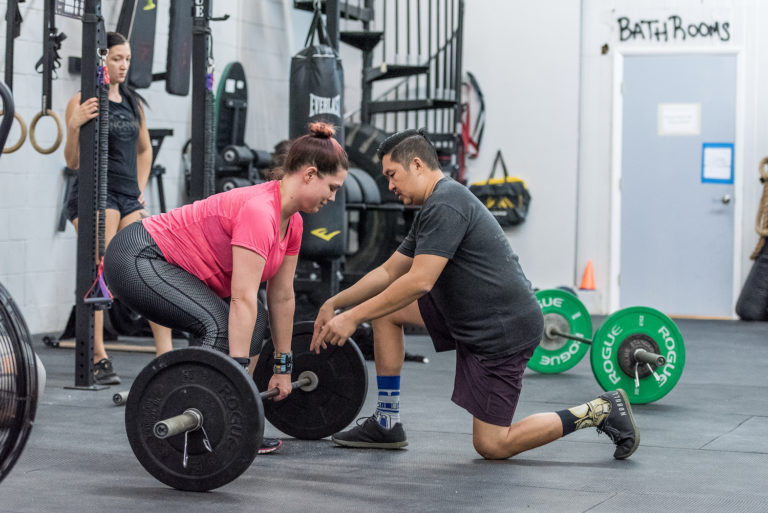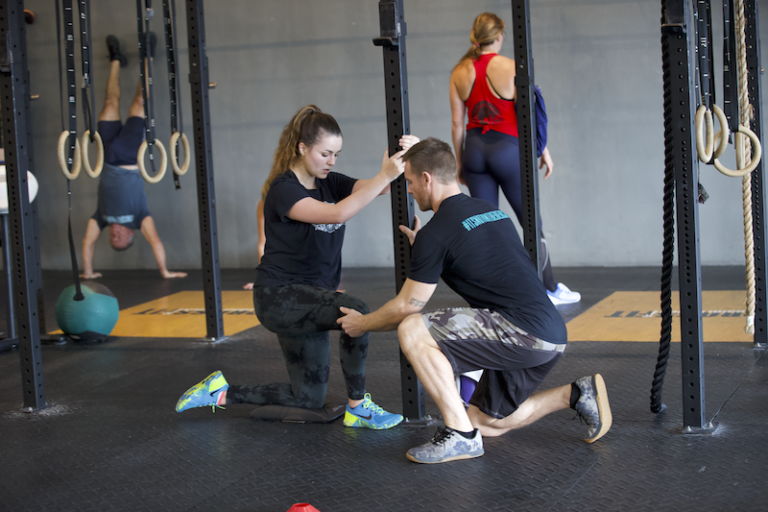“It is more fun to talk with someone who doesn’t use long, difficult words but rather short, easy words like ‘What about lunch?’” ― A. A. Milne, Winnie the Pooh
Among cartoon bears, Winnie the Pooh would for sure have made the best CrossFit trainer.
Sure, he would have needed to modify his diet a little bit (honey is great, but a fit bear cannot function on honey alone), and he would have had to invest in some pants. But Winnie-the-Pooh naturally understood one of the things all good trainers do: Short, easy words are better than long, difficult ones.
What’s the best cue to cure a particular movement fault? Experienced trainers all know the answer: The best cue is the one that works. And the one that works might be different for each athlete, which is why the best trainers have a deep bag of cues — verbal, visual, and tactile — they can reach into when the need arises.

But all the cues in the world won’t be worth much if the trainer isn’t effective in delivering them. It’s a natural tendency for coaches to use too many words and overly complex jargon when verbally cueing an athlete. On overhead-squat day, a well-meaning coach might tell an athlete to externally rotate their shoulders (I am often guilty of this) when they should have just said, “Make your armpits face the front of the room.”
One of my favorite sayings is “more isn’t better, better is better,” because it’s applicable in so many situations. When training, more work isn’t better. Better work is better. When coaching, more words aren’t better; better words are better. As we know from the Level 1 Training Guide, “short, specific, and actionable cues — ‘push the hips back’ — tend to result in a greater success rate.”
What’s the best way to build your arsenal of simple and effective cues?
Start by taking advantage of all the different sources of information available to you. Some of the best coaches in the world make their knowledge freely available via podcasts, social media, blog posts, and more. YouTube alone has thousands of hours of coaching-related videos available to watch.
Watch videos. Read articles. Listen to podcasts. Re-read the Level 1 Training Guide. Take notes. Bookmark favorite sources and go back to them over and over. Don’t be afraid to use another coach’s cue. As the saying goes, “Good artists borrow; great artists steal.”

The day before your next class, make a list of two or three new cues you want to test during the workout. Try them with a few different athletes. After class, make notes to yourself: Which cues were simple and effective? Which could be employed differently next time to better effect?
Video yourself alone in the gym briefing different movements. Challenge yourself to do it over and over again until you’re confident even a brand-new athlete would be able to follow your instructions successfully.
The best thing to do to get better as a coach might also be the most difficult: Actively seek out the opinion of others. Not just other coaches, but athletes, too. Encourage them to be honest with you in their feedback and accept it graciously. Letting your guard down like this requires getting out of your comfort zone and can be humbling, but it will be immeasurably rewarding in how much it will help your development as a coach.
 Becoming a better coach is about dedicating yourself to repeating this learn-test-refine process over and over again. It’s about never being satisfied with what you currently know. Great coaches are endlessly curious and are always on the hunt for new tools they can add to their toolbox so they can do a better job helping their clients be fitter humans.
Becoming a better coach is about dedicating yourself to repeating this learn-test-refine process over and over again. It’s about never being satisfied with what you currently know. Great coaches are endlessly curious and are always on the hunt for new tools they can add to their toolbox so they can do a better job helping their clients be fitter humans.
The best coaches in the world are able to distill complex concepts into easily digestible, bite-sized pieces of information. But this is a skill that isn’t developed by accident — it’s the product of thousands of hours of intentional study and practice.
Like Winnie the Pooh always searching for his next pot of honey, the path to becoming a better coach never really ends, but the journey is definitely worth it.
About the Author
Edward Getterman is a Certified CrossFit Trainer (CF-L3) and the owner of Twin Bridges CrossFit in Waco, Texas. If he can’t be at the gym or at home, he’d prefer to be at Walt Disney World. He loves deadlifts, hates running, and believes above all else that CrossFit is for everyone.
Comments on Winnie the Pooh Would Have Been a Good CrossFit Trainer
Stealing great cues is priceless! Great article!
Reading this because it was recommended in the Professional Coach email. I especially like the A.A. Milne quote to begin this article.
As an “aging athlete” (74), I need a lot of cues and I need them more often than I care to admit. Thank you for reminding those amazing (and patient) coaches to always strive to find the “cue that works” and to always seek what is “better”.
As I’m reading the level 2 manual today I am considering effective communication and nobody does it better than Master Shifu from Kungfu Panda who trained using food as a tool to speak his athletes language.
Great article and reminder for us as coaches to keep cues short, specific, and actionable. Thanks for the read!
Beautiful write-up! The pot of honey line at the end gave me the biggest smile.
Agree, thanks for the reading. like my friend and flowmaster Carlos Andrade said: when one teaches, two learn
Cheers my good friend!
Well written and enjoyable read! Thanks Edward!
Winnie the Pooh Would Have Been a Good CrossFit Trainer
9